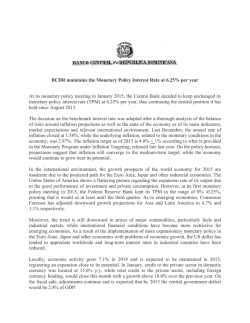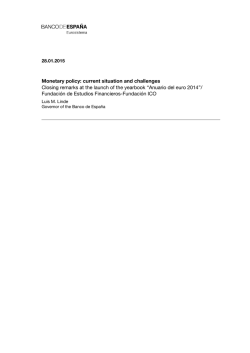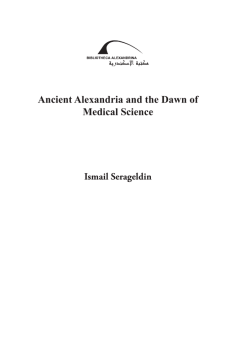
Descargar publicación original en Español
Observatorio BCE 22.01.2015 BANCOS CENTRALES El BCE anuncia una fuerte ampliación de su programa de compra de activos Unidad Escenarios Financieros Con la participación de: Miguel Jiménez El BCE ha aprobado un ambicioso plan de compra de activos (QE por sus siglas en inglés) de 60.000 millones de euros al mes, que incluye activos privados y públicos, al menos hasta septiembre de 2016 y en todo caso hasta que la inflación vuelva a una senda adecuada. Otros aspectos positivos son la inclusión de vencimientos más largos (de 2 a 30 años), la inexistencia de categoría senior para el BCE y la compra de activos según la clave para la suscripción de capital. La distribución de las potenciales pérdidas derivadas de las compras de bonos gubernamentales será muy limitada, lo que podría enviar el mensaje equivocado en términos de fragmentación. Tal como se esperaba, el BCE anunció ayer en su reunión de política monetaria la futura compra de bonos soberanos (QE). El programa es más ambicioso de lo que se esperaba: supondrá compras de 60.000 millones de euros al mes (incluidos los programas CBPP y ABSPP existentes). Asimismo, el BCE ha reducido el tipo de interés de las seis TLTRO todavía pendientes de ejecución, lo que supone la retirada del diferencial de 10 puntos básicos (pb) sobre el tipo de interés de las MRO aplicado en las dos primeras TLTRO. Por lo que respecta a medidas convencionales, el banco central ha mantenido el tipo de referencia sin cambios en el 0,05% (a la vez que mantiene sin variación los tipos de interés de la facilidad marginal de crédito y de la facilidad de depósito). El Sr. Draghi justificó el programa señalando la persistencia de una inflación inferior a la prevista, indicando que el grado de flexibilidad monetaria actual era insuficiente para abordar el riesgo de un periodo de baja inflación demasiado prolongado. El Sr. Draghi aclaró que el Consejo de gobierno (CG) había sido unánime al considerar el programa de compra de activos como una verdadera herramienta de política monetaria que cumple con la legalidad. Por lo que respecta a las perspectivas de inflación, el CG seguirá monitorizando de cerca los riesgos a medio plazo, si bien declaró que tras las medidas anunciadas espera que disminuyan los riesgos a la baja en el crecimiento. En la conferencia de prensa, la atención se centró en los detalles de la ampliación del programa de compra de activos (QE). (véase) El programa no tendrá un plazo definido. Comenzará en marzo de 2015 y se prevé que continúe al menos hasta septiembre de 2016, y en todo caso hasta que el BCE determine que la inflación ha recupera do una senda acorde con su objetivo (es decir, una tasa de inflación por debajo, pero cercana al 2%). El importe de las compras es superior al previsto. El BCE realizará compras mensuales por 60.000 millones de euros (que incluyen las compras bajo los programas CBPP y ABSPP, que actualmente ascienden a aproximadamente 13.000 millones de euros al mes). Las compras adicionales consistirán en su mayor parte en bonos gubernamentales, aunque el BCE también comprará bonos emitidos por agencias e instituciones europeas. En este contexto, el programa total podría superar 1,1 billones de 1/7 www.bbvaresearch.com Observatorio BCE 22.01.2015 euros. Las compras de bonos soberanos ascenderán a alrededor de 900.000 millones de euros, un importe muy superior a lo esperado (esperábamos compras de bonos soberanos de alrededor de 20.00025.000 millones de euros hasta diciembre de 2016, sumando un importe total de 500.000-600.000 millones de euros). El rango de vencimientos será más amplio de lo previsto. El BCE comprará valores con un vencimiento residual mínimo de dos años y máximo de 30 años en el momento de la adquisición (frente a las expectativas del mercado, que se situaban entre los 3 y 10 años). Draghi señaló que el BCE está dispuesto a comprar bonos incluso con rendimientos negativos. La distribución de las pérdidas será limitada. El BCE ha optado por un mecanismo en el que tan sólo el 20% de las compras de activos estarán sujetas a la distribución de riesgos (esto incluye la compra de valores emitidos por instituciones europeas, que ascienden al 12% de las compras adicionales). En términos del mensaje, el diseño óptimo hubiera sido un riesgo totalmente compartido. El hecho de que los riesgos no se compartan en su totalidad podría generar incertidumbre y, además, puede ser considerado como un paso atrás en la integración europea. Las compras se realizarán en base al “capital key” o clave de capital que cada Estado miembro tiene en el BCE. Esta decisión era ampliamente esperada, ya que había sido aplicada por el BCE en anteriores ocasiones (en el programa de compra de deuda pública “SMP”). Tal como se esperaba, el BCE no tendrá la categoría de acreedor senior, aceptando el mismo tratamiento que los inversores privados (pari passu). Las compras estarán sujetas a ciertos límites, en línea con lo esperado. El BCE podrá comprar hasta el 25% de cualquier emisión de bonos y hasta el 33% de la deuda de un solo emisor. Estos límites aseguran que no se superen las minorías de bloqueo entre los tenedores de la deuda. Por lo que respecta a los criterios de elegibilidad, el BCE comprará valores denominados en euros con una calificación crediticia mínima de “investment grade” (es decir, con una calificación como mínimo en la categoría 3 de la escala armonizada del Eurosistema). En lo que respecta a los países sometidos a programas de asistencia financiera, el Sr. Draghi señaló que estarán sujetos a “criterios de elegibilidad adicionales”. Valoración general: esperamos que el programa anunciado por el BCE sea muy eficaz como herramienta pura de política monetaria para combatir la baja inflación, mantener en niveles bajos los tipos de interés a largo plazo, promover la asunción de riesgos y contribuir a la depreciación del euro. Sin embargo, una consecuencia no deseada de esta medida podría ser un aumento de la fragmentación. En este sentido, hubiera sido mucho mejor si el BCE hubiera optado por implantar con un régimen de riesgo compartido por completo. 2/7 www.bbvaresearch.com Observatorio BCE 22.01.2015 DESTACADO: sobre el formato del comunicado del BCE: El aparente formato “control de cambios” que se emplea a continuación tiene por objeto facilitar el seguimiento de cambios del comunicado respecto a la anterior reunión del BCE. En negro aparece la parte del comunicado que se mantiene sin cambios. En azul y subrayado las novedades de la última reunión y en rojo y tachado, el texto que no aparece en el nuevo comunicado Mario Draghi, President of the ECB, Frankfurt am Main, 4 December 201422 January 2015 Ladies and gentlemen, the Vice-President and I are very pleased to welcome you to the first our press conference in our new premises.. Let me wish you all a Happy New Year. I would also like to take this opportunity to welcome Lithuania as the nineteenth country to adopt the euro as its currency. Accordingly, Mr Vasiliauskas, the Chairman of the Board of Lietuvos bankas, became a member of the Governing Council on 1 January 2015. The accession of Lithuania to the euro area on 1 January 2015 triggered a system under which NCB governors take turns holding voting rights on the Governing Council. The details on this rotation system are available on the ECB’s website. We will now report on the outcome of today’s meeting of the Governing Council, which was also attended by the Commission Vice-President, Mr Dombrovskis. Based on our regular economic and monetary analyses, we conducted a thorough reassessment of the outlook for price developments and of the monetary stimulus achieved. As a result, the Governing Council took the following decisions: First, it decided to launch an expanded asset purchase programme, encompassing the existing purchase programmes for asset-backed securities and covered bonds. Under this expanded programme, the combined monthly purchases of public and private sector securities will amount to €60 billion. They are intended to be carried out until end-September 2016 and will in any case be conducted until we see a sustained adjustment in the path of inflation which is consistent with our aim of achieving inflation rates below, but close to, 2% over the medium term. In March 2015 the Eurosystem will start to purchase euro-denominated investment-grade securities issued by euro area governments and agencies and European institutions in the secondary market. The purchases of securities issued by euro area governments and agencies will be based on the Eurosystem NCBs’ shares in the ECB’s capital key. Some additional eligibility criteria will be applied in the case of countries under an EU/IMF adjustment programme. Second, the Governing Council decided to change the pricing of the six remaining targeted longer-term refinancing operations (TLTROs). Accordingly , the interest rate applicable to future TLTRO operations will be equal to the rate on the Eurosystem’s main refinancing operations prevailing at the time when each TLTRO is conducted, thereby removing the 10 basis point spread over the MRO rate that applied to the first two TLTROs. Third, in line with our forward guidance, we decided to keep the key ECB interest rates unchanged. As regards the additional asset purchases, the Governing Council retains control over all the design features of the programme and the ECB will coordinate the purchases, thereby safeguarding the singleness of the Eurosystem’s monetary policy. The Eurosystem will make use of decentralised implementation to mobilise its resources. With regard to the sharing of hypothetical losses, the Governing Council decided that purchases of securities of European institutions (which will be 12% of the additional asset purchases, and which will be purchased by NCBs) will be subject to loss sharing. The rest of the NCBs’ additional asset purchases will not be subject to loss sharing. The ECB will hold 8% of the additional asset purchases. This implies that 20% of the additional asset purchases will be subject to a regime of risk sharing. Separate press releases with more detailed information on the expanded asset purchase programme and the pricing of the TLTROs will be published this afternoon at 3.30 p.m. Today’s monetary policy decision on additional asset purchases was taken to counter two unfavourable developments. First, inflation dynamics have continued to be weaker than expected. While the sharp fall in oil prices over recent months remains the dominant factor driving current headline inflation, the potential for second-round effects on wage and pricesetting has increased and could adversely affect medium-term price developments. This assessment is underpinned by a 3/7 www.bbvaresearch.com Observatorio BCE 22.01.2015 further fall in market-based measures of inflation expectations over all horizons and the fact that most indicators of actual or expected inflation stand at, or close to, their historical lows. At the same time, economic slack in the euro area remains sizeable and money and credit developments continue to be subdued. Second, while the monetary policy measures adopted between June and September last year resulted in a material improvement in terms of financial market prices, this was not the case for the quantitative results. As a consequence, the prevailing degree of monetary accommodation was insufficient to adequately address heightened risks of too prolonged a period of low inflation. Thus, today the adoption of further balance sheet measures has become warranted to achieve our price stability objective, given that the key ECB interest rates have reached their lower bound. Based on our regular economic and monetary analyses, and in line with our forward guidance, we decided to keep the key ECB interest rates unchanged. As regards our non-standard monetary policy measures, we have started purchasing covered bonds and asset-backed securities. These purchase programmes will last for at least two years. Next week, we will conduct the second targeted longer-term refinancing operation, to be followed by six further operations until June 2016. Taken together, our measures will have a sizeable impact on our balance sheet, which is intended to move towards the dimensions it had at the beginning of 2012. In the coming months, our measures will further ease the monetary policy stance more broadly, support our forward guidance on the key ECB interest rates and reinforce the fact that there are significant and increasing differences in the monetary policy cycle between major advanced economies. However, the latest euro area macroeconomic projections indicate lower inflation, accompanied by weaker real GDP growth and subdued monetary dynamics. In this context, early next year the Governing Council will reassess the monetary stimulus achieved, the expansion of the balance sheet and the outlook for price developments. We will also evaluate the broader impact of recent oil price developments on medium-term inflation trends in the euro area. Should it become necessary to further address risks of too prolonged a period of low inflation, the Governing Council remains unanimous in its commitment to using additional unconventional instruments within its mandate. This would imply altering early next year the size, pace and composition of our measures. In response to the request of the Governing Council, ECB staff and the relevant Eurosystem committees have stepped up the technical preparations for further measures, which could, if needed, be implemented in a timely manner. All of our monetary policy measures are geared towards underpinning the firm anchoring of medium to long-term inflation expectations, in line with our aim of achieving inflation rates below, but close to, 2%, and contribute to a return of inflation rates towards that level. Let me now explain our assessment in greater detail, starting with the economic analysis. Real GDP in the euro area rose by 0.2%, quarter on quarter, in the third quarter of this year. This was in line with earlier indications of a weakening in the euro area’s growth momentum, leading to a downward revision of the outlook for euro area real GDP growth in the most recent forecasts. The latest data and survey evidence up to November confirm this picture of a weaker growth profile in the period ahead. At the same time, the outlook for a modest economic recovery remains in place. On the one hand, domesticLet me now explain our assessment in greater detail, starting with the economic analysis. Real GDP in the euro area rose by 0.2%, quarter on quarter, in the third quarter of 2014. The latest data and survey evidence point to continued moderate growth at the turn of the year. Looking ahead, recent declines in oil prices have strengthened the basis for the economic recovery to gain momentum. Lower oil prices should support households’ real disposable income and corporate profitability. Domestic demand should also be further supported by our monetary policy measures, the ongoing improvements in financial conditions, and the progress made in fiscal consolidation and structural reforms, and significantly lower energy prices supporting real disposable income. Furthermore, demand for exports should benefit from the global recovery. On the other hand, the However, the euro area recovery is likely to continue to be dampened by high unemployment, sizeable unutilised capacity, and the necessary balance sheet adjustments in the public and private sectors. These elements are reflected in the December 2014 Eurosystem staff macroeconomic projections for the euro area, which foresee annual real GDP increasing by 0.8% in 2014, 1.0% in 2015 and 1.5% in 2016. Compared with the September 2014 ECB staff macroeconomic projections, the projections for real GDP growth have been revised substantially downwards. Downward revisions were made to the projections for both domestic demand and net exports. The risks surrounding the economic outlook for the euro area are on the downside. In particular, the weak euro area growth momentum, alongside high geopolitical risks, has the potential to dampen confidence and especially private investment. In addition, insufficient progress in structural reforms in euro area countries constitutes a key downward risk to the economic outlook. According to Eurostat’s flash estimate, euro area annual HICP inflation was 0.3% in November 2014, after 0.4% in October. Compared with the previous month, this mainly reflects a stronger fall in energy price inflation and a somewhat lower annual increase in services prices. Taking into account the current environment of very low rates of inflation, it will 2/7 www.bbvaresearch.com Observatorio BCE 22.01.2015 be important to assess the broader impact of recent oil price developments on medium-term inflation trends and to avoid spillovers to inflation expectations and wage formation. Against the background of recent oil price developments, it is crucial to recall that forecasts and projections are based on technical assumptions, especially for oil prices and exchange rates. On the basis of information available in midNovember, at the time the December 2014 Eurosystem staff macroeconomic projections for the euro area were finalised, annual HICP inflation was foreseen to reach 0.5% in 2014, 0.7% in 2015 and 1.3% in 2016. In comparison with the September 2014 ECB staff macroeconomic projections, they have been revised significantly downwards. These revisions reflect mainly lower oil prices in euro terms and the impact of the downwardly revised outlook for growth, but they do not yet incorporate the fall in oil prices over the past few weeks following the cut-off date for the projections. Over the coming months, annual HICP inflation rates could experience renewed downward movements, given the recent further decline in oil prices. The Governing Council will continue to closely monitor the risks to the outlook for price developments over the medium term. In this context, we will focus in particular on the possible repercussions of dampened growth dynamics, geopolitical developments, exchange rate and energy price developments, and the pass-through of our monetary policy measures. We will be particularly vigilant as regards the broader impact of recent oil price developments on medium-term inflation trends in the euro area. Turning to the monetary analysis, data for October 2014 support the assessment of subdued underlying growth in broad money (M3), with the annual growth rate standing at 2.5% in October, unchanged from September.The risks surrounding the economic outlook for the euro area remain on the downside, but should have diminished after today’s monetary policy decisions and the continued fall in oil prices over recent weeks. According to Eurostat, euro area annual HICP inflation was -0.2% in December 2014, after 0.3% in November. This decline mainly reflects a sharp fall in energy price inflation and, to a lesser extent, a decline in the annual rate of change in food prices. On the basis of current information and prevailing futures prices for oil, annual HICP inflation is expected to remain very low or negative in the months ahead. Such low inflation rates are unavoidable in the short term, given the recent very sharp fall in oil prices and assuming that no significant correction will take place in the next few months. Supported by our monetary policy measures, the expected recovery in demand and the assumption of a gradual increase in oil prices in the period ahead, inflation rates are expected to increase gradually later in 2015 and in 2016. The Governing Council will continue to closely monitor the risks to the outlook for price developments over the medium term. In this context, we will focus in particular on geopolitical developments, exchange rate and energy price developments, and the pass-through of our monetary policy measures. Turning to the monetary analysis, recent data indicate a pick-up in underlying growth in broad money (M3), although it remains at low levels. The annual growth rate of M3 increased to 3.1% in November 2014, up from 2.5% in October and a trough of 0.8% in April 2014. Annual growth in M3 continues to be supported by its most liquid components, with the narrow monetary aggregate M1 growing at an annual rate of 6.29% in OctoberNovember. The annual rate of change of loans to non-financial corporations (adjusted for loan sales and securitisation) was remained weak at -1.3% in November 2014, compared with -1.6% in October, after -1.8% in September, showing a while continuing its gradual recovery from a trough of -3.2% in February 2014. On average over recent months, net redemptions have moderated from the historically high levels recorded a year ago. Lending and net lending flows turned slightly positive in November. In this respect, the January 2015 bank lending survey indicates a further net easing of credit standards in the fourth quarter of 2014, with cross-country disparities decreasing in parallel with an increase in net demand for loans across all loan categories. Banks expect that these dynamics will continue in early 2015. Despite these improvements, lending to non-financial corporations remains weak and continues to reflect the lagged relationship with the business cycle, credit risk, credit supply factors and the ongoing adjustment of financial and non-financial sector balance sheets. The annual growth rate of loans to households (adjusted for loan sales and securitisation) was 0.7% in November, after 0.6% in October, after 0.5% in September. The. Our monetary policy measures in place and the completion of the ECB’s comprehensive assessment should support a further stabilisation ofimprovement in credit flows. To sum up, a cross-check of the outcome of the economic analysis with the signals coming from the monetary analysis confirmsconfirmed the need to closely monitor the risks to the outlook for price developments over the medium term and to be prepared to provide further monetary policy accommodation, if needed. All our monetary policy measures should provide support to the euro area recovery and bring inflation rates closer to levels below, but close to, 2%. Monetary policy is focused on maintaining price stability over the medium term and its accommodative stance contributes to supporting economic activity. However, in order to strengthenincrease investment activity, boost job creation and raise 3/7 www.bbvaresearch.com Observatorio BCE 22.01.2015 productivity growth, other policy areas need to contribute decisively. In particular, the determined implementation of product and labour market reforms as well as actions to improve the business environment for firms needneeds to gain momentum in several countries. It is crucial that structural reforms be implemented swiftly, credibly and effectively as this will not only increase the future sustainable growth of the euro area, but will also raise expectations of higher incomes and encourage firms to increase investment today and bring forward the economic recovery. Fiscal policiespolicies should support the economic recovery, while ensuring debt sustainability in compliance with the Stability and Growth Pact, which remains the anchor for confidence. All countries should use the available scope for a more growth-friendly composition of fiscal policies. The Investment Plan for Europe which the European Commission announced on 26 November 2014 will also support the recovery. 4/7 www.bbvaresearch.com Observatorio BCE 22.01.2015 AVISO LEGAL El presente documento, elaborado por el Departamento de BBVA Research, tiene carácter divulgativo y contiene datos, opiniones o estimaciones referidas a la fecha del mismo, de elaboración propia o procedentes o basadas en fuentes que consideramos fiables, sin que hayan sido objeto de verificación independiente por BBVA. BBVA, por tanto, no ofrece garantía, expresa o implícita, en cuanto a su precisión, integridad o corrección. Las estimaciones que este documento puede contener han sido realizadas conforme a metodologías generalmente aceptadas y deben tomarse como tales, es decir, como previsiones o proyecciones. La evolución histórica de las variables económicas (positiva o negativa) no garantiza una evolución equivalente en el futuro. El contenido de este documento está sujeto a cambios sin previo aviso en función, por ejemplo, del contexto económico o las fluctuaciones del mercado. BBVA no asume compromiso alguno de actualizar dicho contenido o comunicar esos cambios. BBVA no asume responsabilidad alguna por cualquier pérdida, directa o indirecta, que pudiera resultar del uso de este documento o de su contenido. Ni el presente documento, ni su contenido, constituyen una oferta, invitación o solicitud para adquirir, desinvertir u obtener interés alguno en activos o instrumentos financieros, ni pueden servir de base para ningún contrato, compromiso o decisión de ningún tipo. Especialmente en lo que se refiere a la inversión en activos financieros que pudieran estar relacionados con las variables económicas que este documento puede desarrollar, los lectores deben ser conscientes de que en ningún caso deben tomar este documento como base para tomar sus decisiones de inversión y que las personas o entidades que potencialmente les puedan ofrecer productos de inversión serán las obligadas legalmente a proporcionarles toda la información que necesiten para esta toma de decisión. El contenido del presente documento está protegido por la legislación de propiedad intelectual. Queda expresamente prohibida su reproducción, transformación, distribución, comunicación pública, puesta a disposición, extracción, reutilización, reenvío o la utilización de cualquier naturaleza, por cualquier medio o procedimiento, salvo en los casos en que esté legalmente permitido o sea autorizado expresamente por BBVA. 5/7 www.bbvaresearch.com
© Copyright 2025





